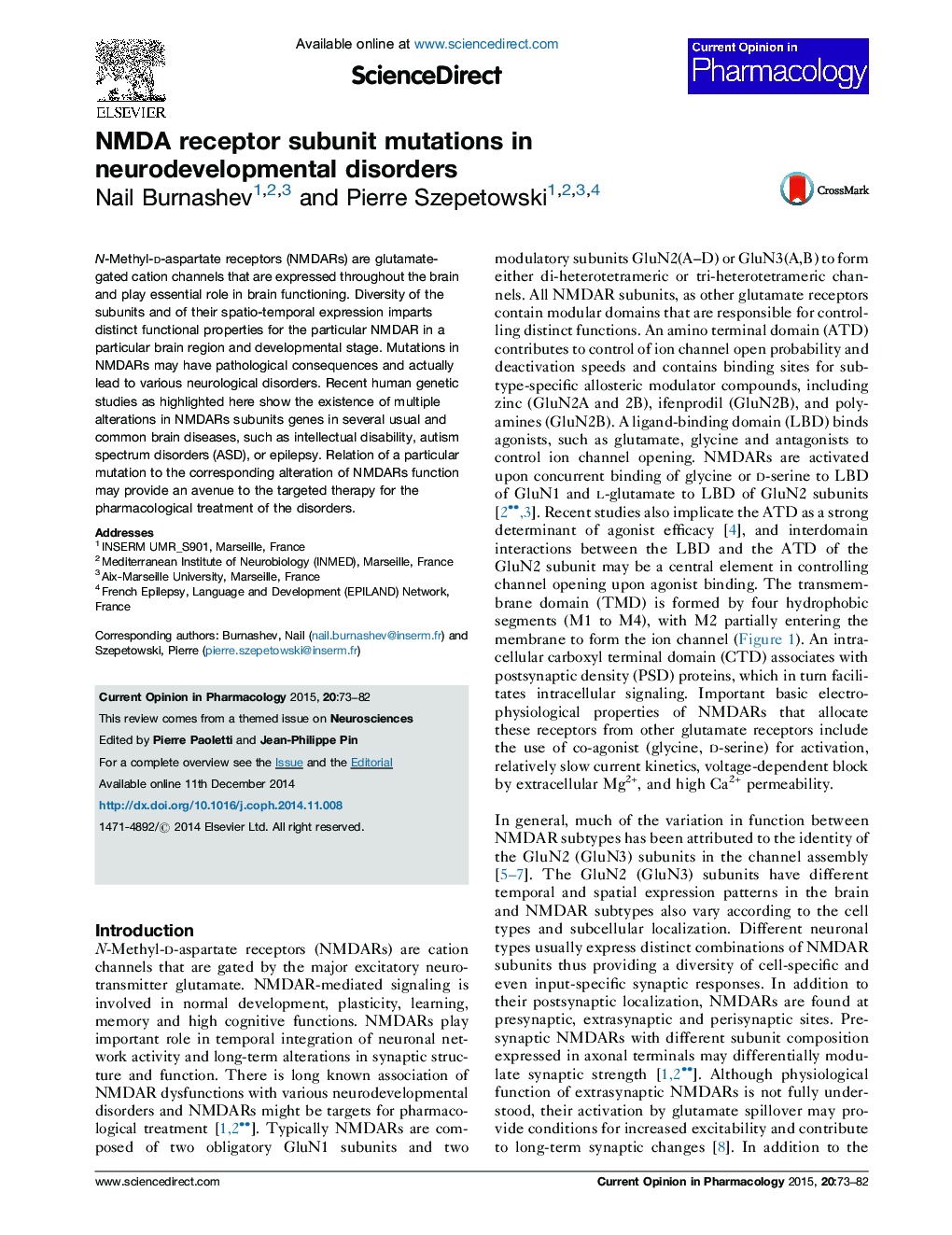| کد مقاله | کد نشریه | سال انتشار | مقاله انگلیسی | نسخه تمام متن |
|---|---|---|---|---|
| 2529820 | 1558128 | 2015 | 10 صفحه PDF | دانلود رایگان |

• N-Methyl-d-aspartate receptors (NMDARs) diversity in brain is briefly described.
• We review recent studies on NMDAR subunit mutations in neurodevelopmental disorders.
• We discuss relations of the mutations on NMDAR function and clinical manifestations.
N-Methyl-d-aspartate receptors (NMDARs) are glutamate-gated cation channels that are expressed throughout the brain and play essential role in brain functioning. Diversity of the subunits and of their spatio-temporal expression imparts distinct functional properties for the particular NMDAR in a particular brain region and developmental stage. Mutations in NMDARs may have pathological consequences and actually lead to various neurological disorders. Recent human genetic studies as highlighted here show the existence of multiple alterations in NMDARs subunits genes in several usual and common brain diseases, such as intellectual disability, autism spectrum disorders (ASD), or epilepsy. Relation of a particular mutation to the corresponding alteration of NMDARs function may provide an avenue to the targeted therapy for the pharmacological treatment of the disorders.
Journal: Current Opinion in Pharmacology - Volume 20, February 2015, Pages 73–82